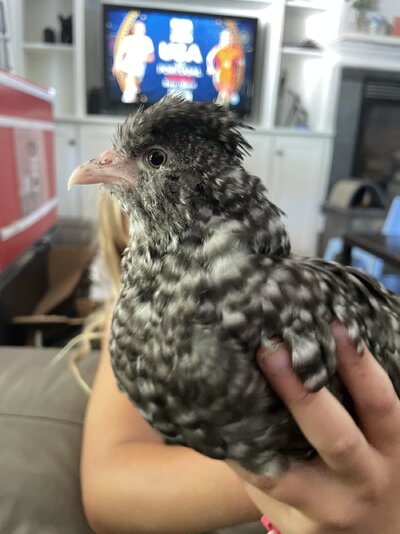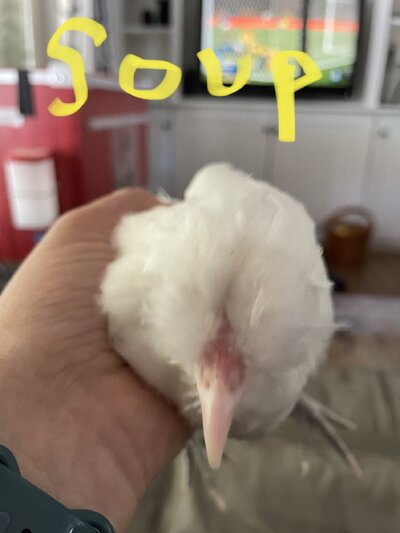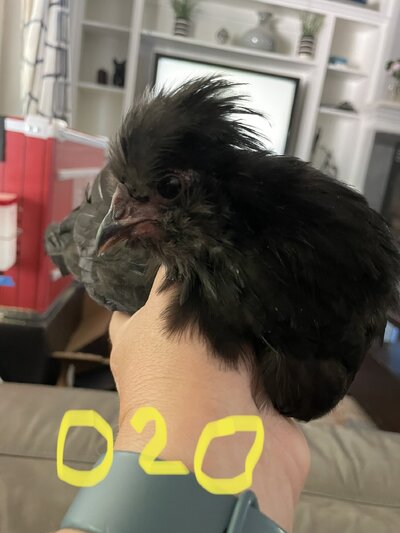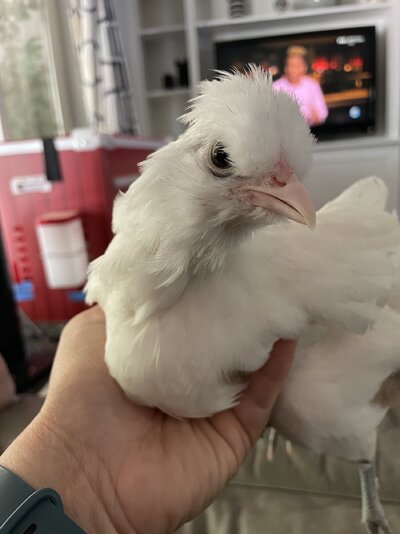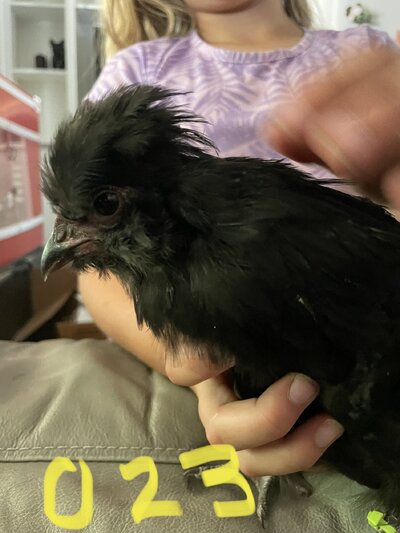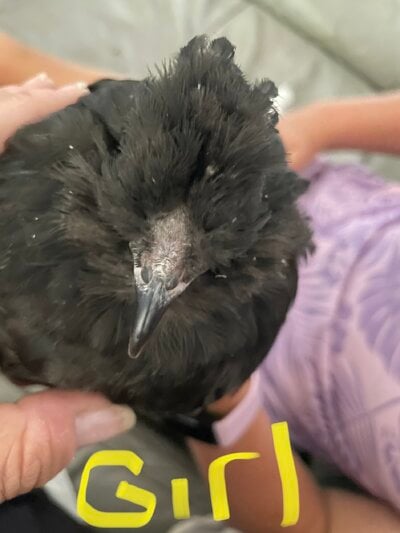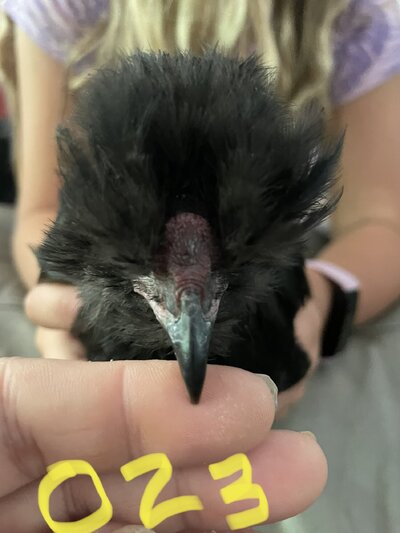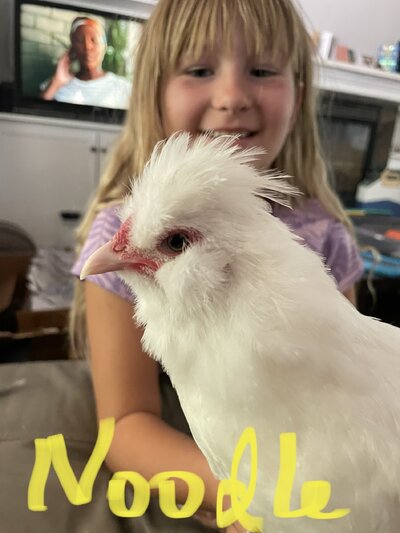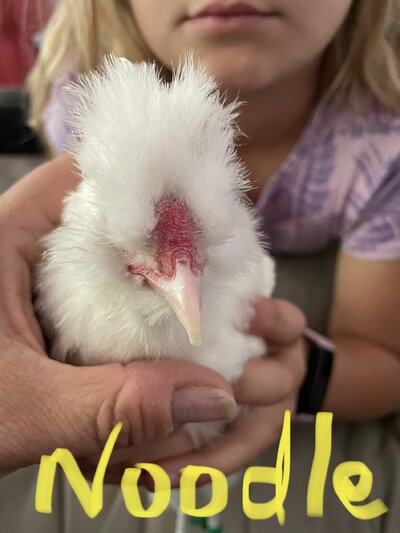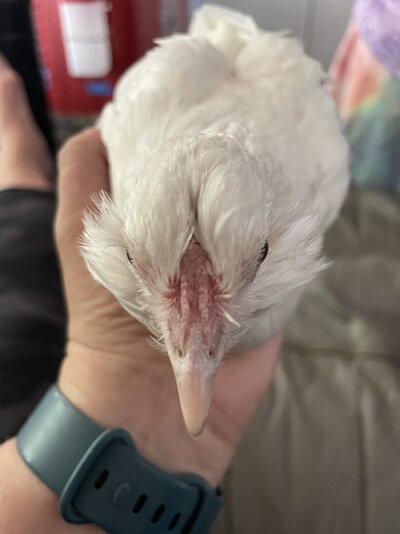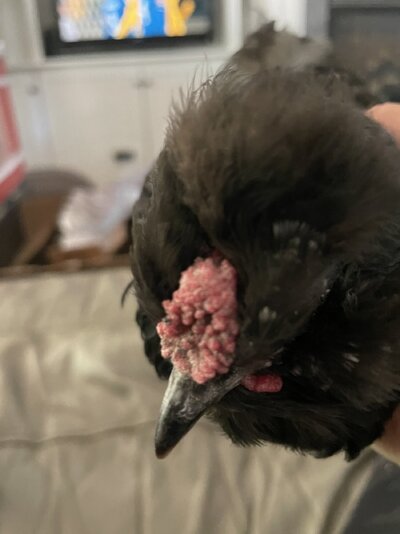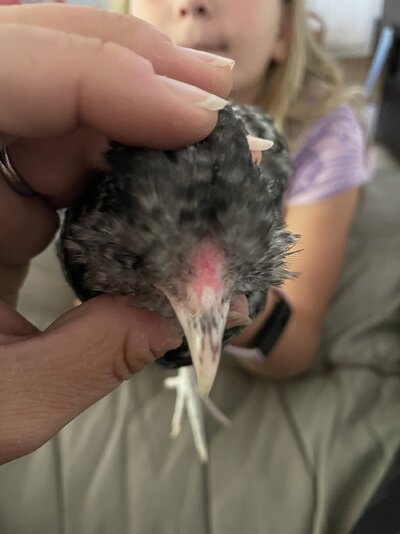Adding a bit more on combs to help others know what to look for. This first is a Quail Watermaal pullet 4-months. Her spikes are clearly developed already even though her comb is not fully developed. You will only get the desirable long spikes on developed combs if the babies combs have defined spikes.

If the spikes are not clearly defined at day one, and sometimes even if they are, you can end up getting faults, such as short spikes, a weak spikes, or a partially fused spike like in the below 4-month old blue quail cockerel (middle and the bird’s left spike are partially fused):

And in younger birds, notice the presence of three elongated spikes on the back of this 8 week old quail Watermaal pullet’s combs:

It’s okay is they are a little shorter, but I wouldn’t want them much shorter than the spikes on this 9-week old black Watermaal pullet’s comb:

And I am disappointed in this Silver quail cockerels comb, where the single spike (or tiny fused double) on the end is smaller or the same as the rest of the comb texture - he is 8 weeks old and also has a very small tassel. At this age I would not keep any birds with a smaller tassel than this:


And finally, this is a quail male with a triple spike but he has 2 side sprigs (they are the equivalent of side sprigs, though on rose combs these might be considered large texture). It almost looks like an additional spike, but it is not on the back end of the comb and is not inherited like a spike. The second one is concealed on the birds right (photo’s left) under tassel feathers. I like how small this comb is and how it lacks wrinkles. I would like it to be squared off in the front. I would prefer it not have the sprigs, but overall this is a strong comb on a 4-month-old

If the spikes are not clearly defined at day one, and sometimes even if they are, you can end up getting faults, such as short spikes, a weak spikes, or a partially fused spike like in the below 4-month old blue quail cockerel (middle and the bird’s left spike are partially fused):
And in younger birds, notice the presence of three elongated spikes on the back of this 8 week old quail Watermaal pullet’s combs:
It’s okay is they are a little shorter, but I wouldn’t want them much shorter than the spikes on this 9-week old black Watermaal pullet’s comb:
And I am disappointed in this Silver quail cockerels comb, where the single spike (or tiny fused double) on the end is smaller or the same as the rest of the comb texture - he is 8 weeks old and also has a very small tassel. At this age I would not keep any birds with a smaller tassel than this:
And finally, this is a quail male with a triple spike but he has 2 side sprigs (they are the equivalent of side sprigs, though on rose combs these might be considered large texture). It almost looks like an additional spike, but it is not on the back end of the comb and is not inherited like a spike. The second one is concealed on the birds right (photo’s left) under tassel feathers. I like how small this comb is and how it lacks wrinkles. I would like it to be squared off in the front. I would prefer it not have the sprigs, but overall this is a strong comb on a 4-month-old




